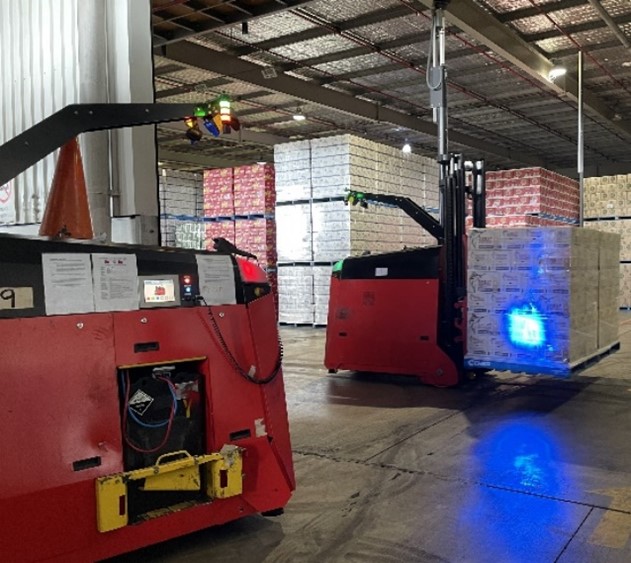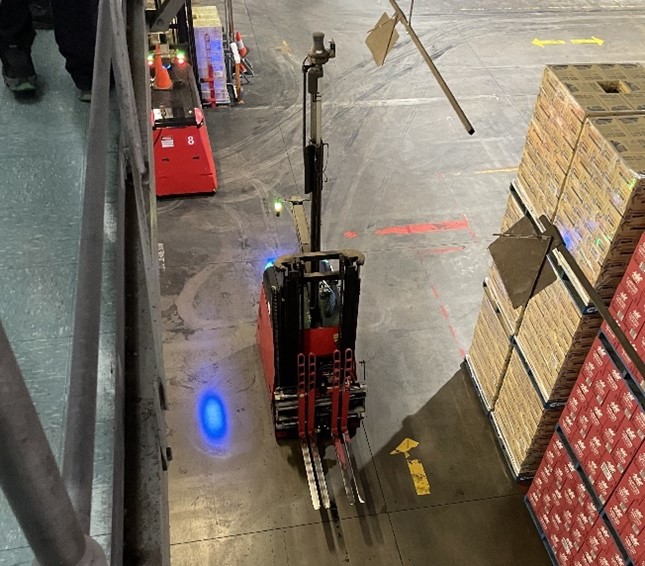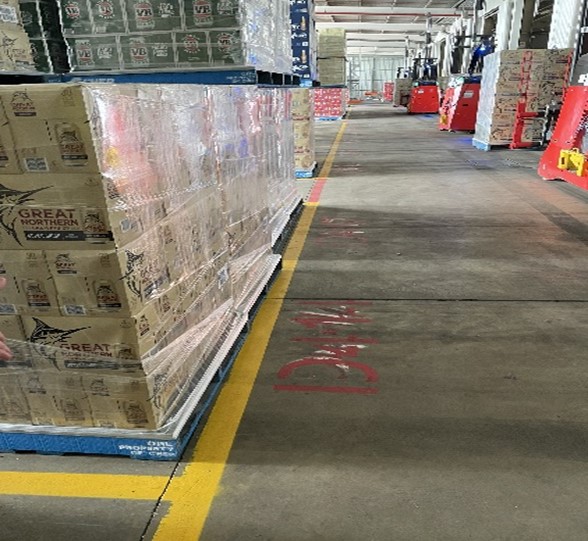Auto guided vehicles case study: Carlton United Breweries
Workplace Health and Safety Queensland visited Carlton United Breweries (CUB) to learn more about auto guided vehicles (AGV) at the Yatala facility and how they are improving onsite traffic management (OSTM).
CUB employs more than 1,700 people at six Australian breweries and various offices around Australia.
What was the problem?
Heavy vehicles, mobile plant, trucks, and pedestrians interact with each other at Yatala on a regular basis. CUB identified there were safety hazards associated with these interactions and so reviewed its on-site traffic management work health and safety systems, and practices. It was then determined there were inadequate control measures in place.
Issues included:
- personnel and visitors, mobile plant and vehicle accessing high risk areas of the site, such as warehouse storage and vehicle loading zones
- injury rates of personnel only using forklifts was quite high
- unsuitable traffic flows into or exiting the site.
What was the solution?
CUB invested in and introduced the AGV system which improved OSTM and many other safety issues.


The auto guided vehicles at the CUB facility
Key safety features of the AGV system include:
- stopping mechanisms (sensors) at the bottom and around the sides of the AGV to detect objects all around it
- bright blue lights on the ground to highlight where the AGV is, essentially creating an exclusion zone
- an ergonomically safe battery charging station.
The AGVs can detect each other in the system and will stop, forming a line if one in front stops. If one breaks down, other AGVs will park and alert workers on the shop floor to retrieve the broken down AGV. They also have fail safes, so if an object detection sensor fails, or something else fails, the AGV will immediately stop and flash a red warning light. It won’t operate until the operator has checked it and cleared the error or removed the machine from the floor.
The ergonomically safe battery changing station removes most manual handling tasks, including changing the battery of the AGV. There is only one operator on the floor monitoring the AGV, and a team in the office that monitors and inputs orders into the system.
Combined with the AGV system, CUB also created manual exclusion zones by putting traffic cones down and making a corridor for people to walk safely around the facility.
Issues identified

Stacked pallets and site floor paint
During the initial set up, they quickly identified some teething issues with the technology for their layout. When stacking pallets, the AGV had no way of knowing if the stack would collapse when something became loose.
CUB addressed this issue by modifying the sensors on the AGVs to precisely identify the gaps when stacking pallets to ensure they would not come loose.
In addition, a change in paint on the site floor to a high gloss interfered with its sensors which meant the AGVs were unable to dislodge pallets from the forks. The issue was rectified by using a matt paint finish.
Outcomes from implementing the new AGV system
CUB reported improved efficiencies, picking order accuracy and safety. The AGV system completes the end to end process with limited human interaction. This removed almost all the risk by removing worker / forklift interaction. This reduced workplace injuries occurring when workers hop in and out of the forklift and pallets falling on workers. By implementing the AGV system, CUB significantly reduced its injury rates compared to just using forklifts. Over the last five years, rates have gone down from 62 per cent to five per cent as at 2022, reducing lost time injuries (LTI).
More information
If you need more information on leadership in safety, emerging issues and/or on-site traffic management please visit the on-site traffic management campaign page or contact industryengagement@oir.qld.gov.au.